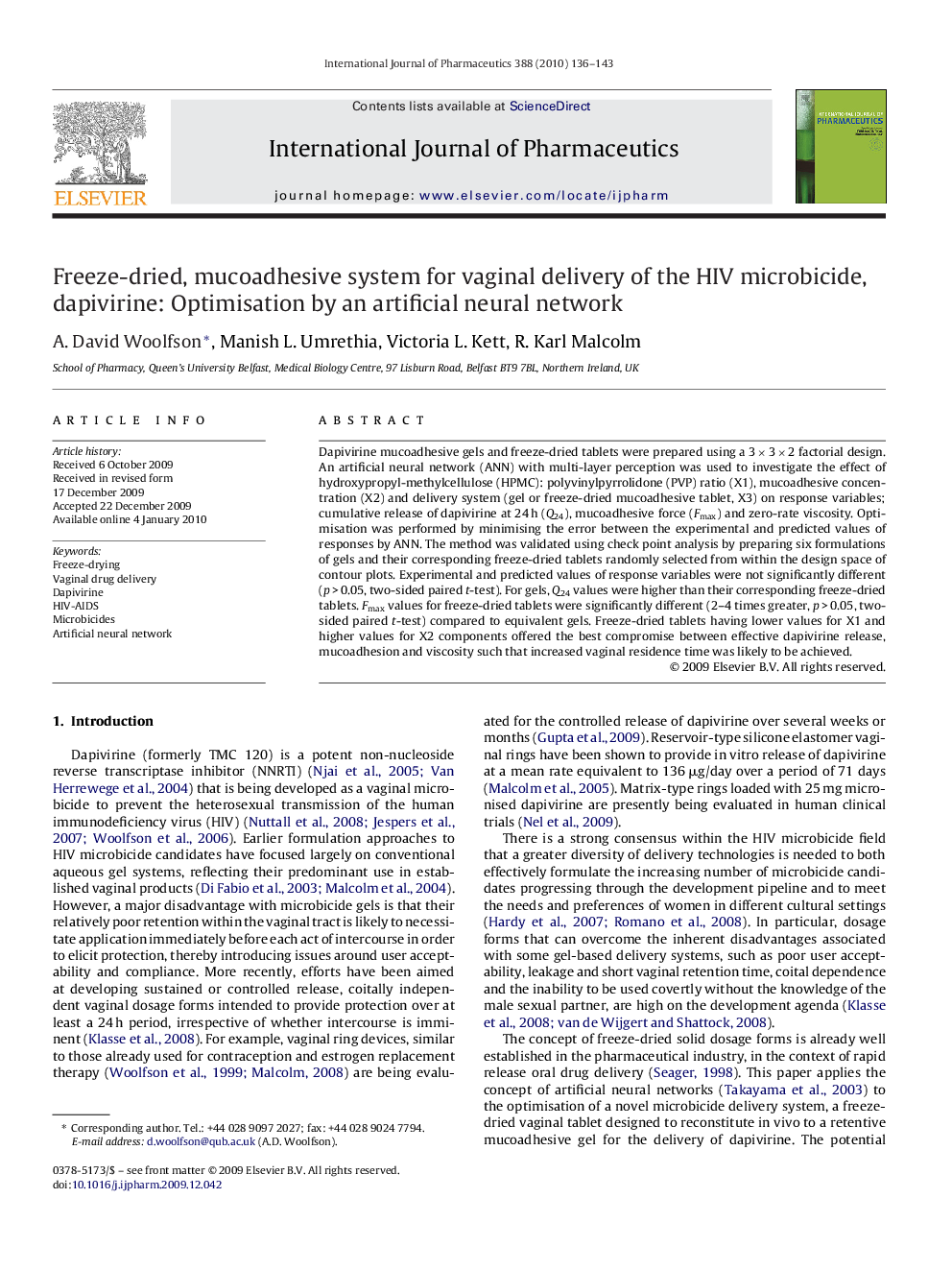| Article ID | Journal | Published Year | Pages | File Type |
|---|---|---|---|---|
| 2504409 | International Journal of Pharmaceutics | 2010 | 8 Pages |
Dapivirine mucoadhesive gels and freeze-dried tablets were prepared using a 3 × 3 × 2 factorial design. An artificial neural network (ANN) with multi-layer perception was used to investigate the effect of hydroxypropyl-methylcellulose (HPMC): polyvinylpyrrolidone (PVP) ratio (X1), mucoadhesive concentration (X2) and delivery system (gel or freeze-dried mucoadhesive tablet, X3) on response variables; cumulative release of dapivirine at 24 h (Q24), mucoadhesive force (Fmax) and zero-rate viscosity. Optimisation was performed by minimising the error between the experimental and predicted values of responses by ANN. The method was validated using check point analysis by preparing six formulations of gels and their corresponding freeze-dried tablets randomly selected from within the design space of contour plots. Experimental and predicted values of response variables were not significantly different (p > 0.05, two-sided paired t-test). For gels, Q24 values were higher than their corresponding freeze-dried tablets. Fmax values for freeze-dried tablets were significantly different (2–4 times greater, p > 0.05, two-sided paired t-test) compared to equivalent gels. Freeze-dried tablets having lower values for X1 and higher values for X2 components offered the best compromise between effective dapivirine release, mucoadhesion and viscosity such that increased vaginal residence time was likely to be achieved.
